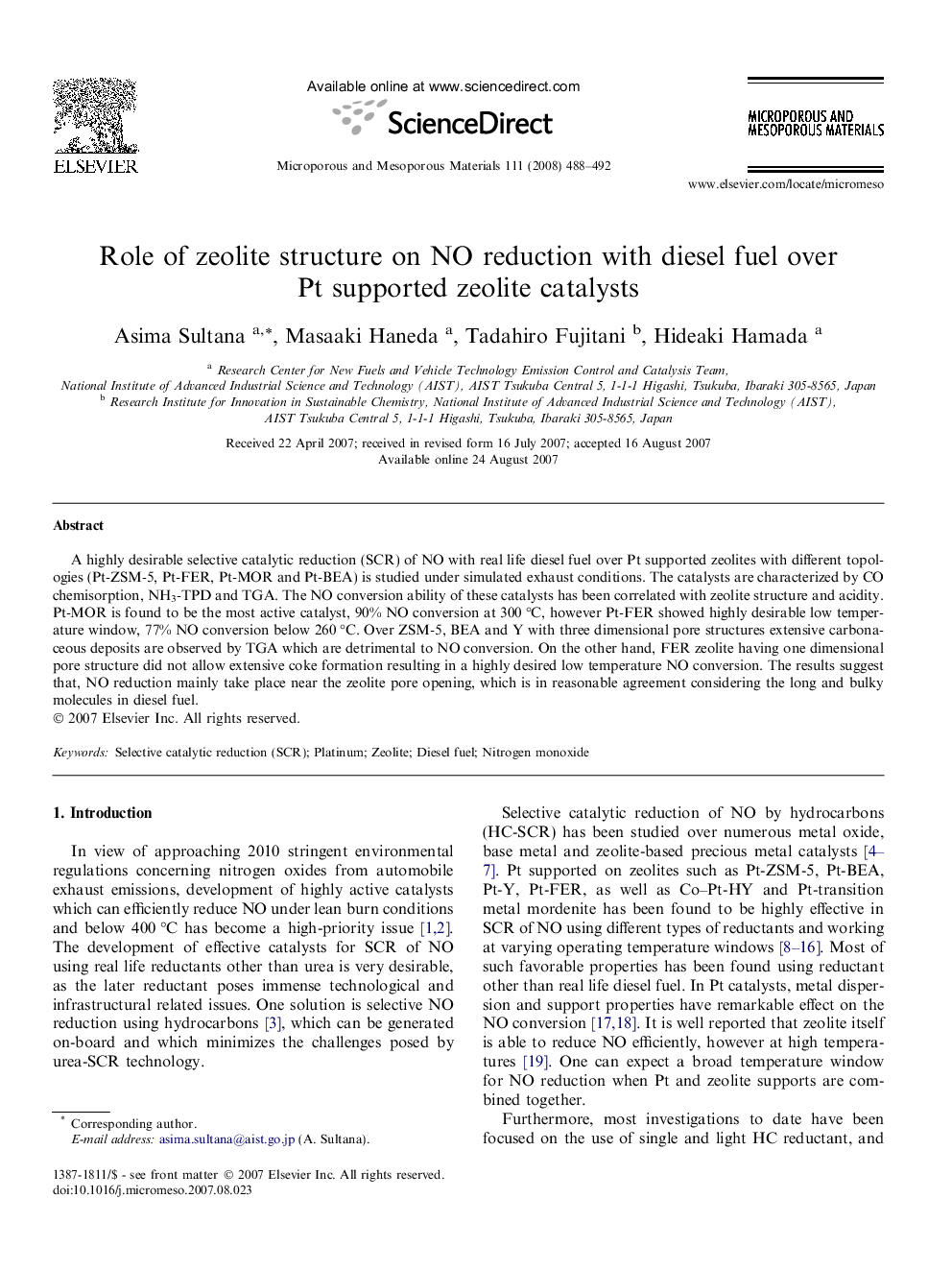| Article ID | Journal | Published Year | Pages | File Type |
|---|---|---|---|---|
| 75747 | Microporous and Mesoporous Materials | 2008 | 5 Pages |
A highly desirable selective catalytic reduction (SCR) of NO with real life diesel fuel over Pt supported zeolites with different topologies (Pt-ZSM-5, Pt-FER, Pt-MOR and Pt-BEA) is studied under simulated exhaust conditions. The catalysts are characterized by CO chemisorption, NH3-TPD and TGA. The NO conversion ability of these catalysts has been correlated with zeolite structure and acidity. Pt-MOR is found to be the most active catalyst, 90% NO conversion at 300 °C, however Pt-FER showed highly desirable low temperature window, 77% NO conversion below 260 °C. Over ZSM-5, BEA and Y with three dimensional pore structures extensive carbonaceous deposits are observed by TGA which are detrimental to NO conversion. On the other hand, FER zeolite having one dimensional pore structure did not allow extensive coke formation resulting in a highly desired low temperature NO conversion. The results suggest that, NO reduction mainly take place near the zeolite pore opening, which is in reasonable agreement considering the long and bulky molecules in diesel fuel.
